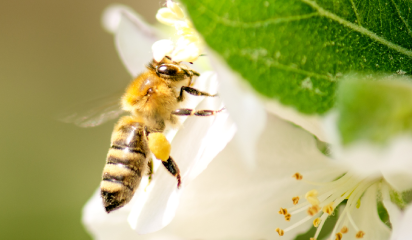Chris Hipkins’ recent visit to London has resulted in a potential boost to New Zealand (NZ) exporters in the form of earlier entry into a free trade agreement with the United Kingdom (UK). The agreement, which now comes into force on 31 May 2023, is expected to increase NZ’s GDP by up to $1 billion per year. This is great news for NZ wine, honey and hoki exporters.
The NZ-UK FTA (FTA) will remove tariffs and address a slew of other non-tariff barriers, which should provide NZ businesses significant opportunities to increase their presence in the UK. Notably, NZ exporters are expected to save approximately $37 million annually in tariffs alone, while the FTA could help boost exports into the UK by over 50%. Tariffs for wine, honey, milk and hoki are set to be removed from day one, while tariffs for other key exports such as butter, cheese, apples, lamb and beef will be removed within 15 years (many within 3-5 years).
The FTA also includes a full chapter on intellectual property (IP) that builds upon both countries’ existing international obligations, such as those under the Trade-Related Aspects of Intellectual Property Rights (TRIPS) Agreement.
What you should do
The NZ-UK FTA will provide significant commercial opportunities to NZ exporters.
The FTA comes into force on 31 May 2023, in advance of the NZ-EU FTA, so now is the perfect time to explore the UK market.
Testing out the UK trading waters gives you the benefit of targeting a market comprising over 65 million English speaking consumers before assessing whether exporting to Europe is right for your business. Signature of the NZ-EU FTA is expected later in 2023, and will likely come into force shortly afterwards, paving the way for entry into a market of almost 450 million consumers.
If you are entering the UK and European markets for the first time, you should also shore up your IP protection. This might include conducting trade mark clearance searches, to ensure your brand is available to use without infringing another businesses rights, or filing for UK and EU trade mark applications to protect your brand in these new, potentially lucrative, export markets. You should also review your packaging and promotional material to ensure you are not falling foul of any GI protection in the UK and EU.
The NZ-UK FTA and intellectual property
The FTA includes some notable IP provisions:
- NZ will extend copyright protection by 20 years for authors, performers and producers
- NZ will introduce an artists’ resale right scheme
- NZ will expand the scope of performers’ rights
- No changes are required to patents or data protection rules
- The IP chapter will not increase the cost of medicines
- For NZ, the recognition of the Crown’s Te Tiriti o Waitangi obligations remain a central consideration
A number of the provisions mirror those contained in NZ’s free trade agreement with the European Union (EU). Signature of the NZ-EU FTA is expected sometime in 2023.
The FTA contains comments on the Haka Ka Mate but no real provision to ensure protection in the UK.
Geographical indications
Geographical Indications (GIs) are names used to describe goods from a particular geographic location that possess a quality, reputation or other characteristic associated with that location.
Interestingly, the NZ-UK FTA does not contain any up-front commitments in relation to GIs. Though, the GI section in the FTA states that it shall apply to the recognition of wines, spirits, agricultural products and foodstuffs.
In NZ, GI protection currently extends to wine and spirits only. For example, most are familiar with Marlborough wine (wine from the Marlborough region) and Champagne (wine from the Champagne region in France). In NZ, there are 26 registered GIs for wine and spirits, while the UK protects over 5,000 GIs for various foodstuffs and beverages. However, only 94 of those GI registrations are for UK based products, such as Stilton White Cheese and Scotch Whisky.
The NZ-UK FTA will be reviewed shortly, with an eye to extending NZ’s GI register to protect UK GIs, and vice versa. It will be interesting to see how NZ incorporates UK GIs, and whether NZ will soon allow for protection of local GIs for NZ grown agricultural products and foodstuffs.
Artist resale right scheme
The NZ-UK FTA also agrees to establish a regime for artists’ resale rights.
While no specifics are outlined in the FTA, the parties agree to provide a resale right for authors of original works, which cannot be waived, and the right to receive a royalty based on the price paid for the resale of any work, following the first transfer of the original work by the author. Both parties have the right to determine any procedures relating to the collection and amount of royalties, the criteria for qualifying original works, resales and which authors are eligible to receive royalties.
NZ and the UK have until 31 May 2025 to implement their obligations under this provision, so watch this space for more information about artist resale rights in NZ. Read our article, Resale rights for visual artists in New Zealand by 2024, for more information on NZ’s proposed Artist Resale Royalty Scheme.
Get in touch
We have a team of experienced practitioners who help exporters protect their brands in foreign markets. So, if you’re looking at growing your business’ brand into the UK or EU, please get in touch.











